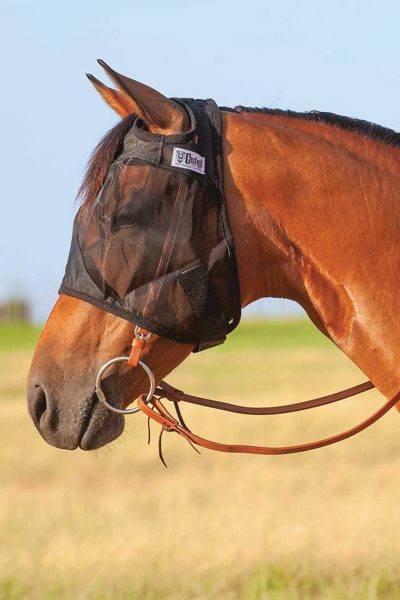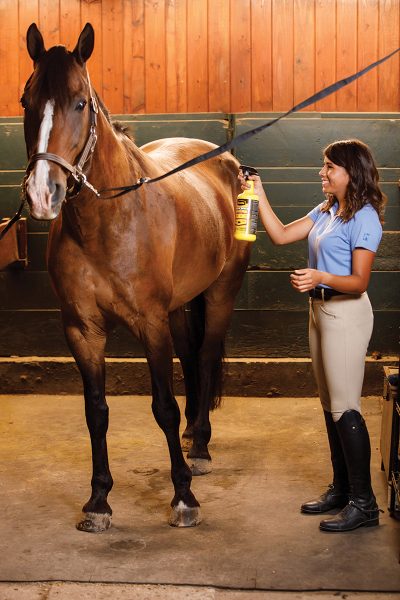It’s summer, and that can only mean one thing…flies! (Well, OK, hopefully it also means good things, like lots of time in the saddle.) Keep your summer from being ruined by these pests with a few simple steps for fly control for horses.

Fly Control Steps
◆ Muck those stalls—no, really! In this case, doing your chores will actually help in more ways than one. Flies are attracted to horse poop, there’s no way around that. The more often you can clean your horse’s stall (shoot for twice a day) or turnout paddock (daily should suffice), the fewer flies you will see. Ideally, manure should be stored far away from where horses live.
◆ Other barn chores that help control flies around horses include tightly covering garbage cans and feed containers. Take out the trash frequently and clean up any spilled feed, or you may have a new fly family setting up shop in your barn.
◆ Use fly spray; apply liberally and often. You can use a roll-on product for the face. Always read the directions on the package, which will tell you how much and how frequently to apply. Hint: it’s probably more than you think!
◆ Dress to win: keep your horse outfitted in a fly mask, fly sheet and fly boots if he lives outside. Flies are much more annoying out in the sun! Less stomping also means fewer lost shoes and chipped hooves.
◆ If your horse lives in a stall, you can make it less cozy for flies by mounting a safe outdoor fan to the stall grill. Moving the air means flies have no place to land! Some fancier barns or those in very hot climates also have automatic fly spray misting systems overhead.

◆ Another option is to feed your horse a supplement that repel flies through ingredients like garlic and apple cider vinegar, or an ingredient called insect growth regulator (IGR), which passes through in the manure and keeps fly eggs from developing when they are laid on this favorite nesting ground.
◆ While riding, you have additional options, such as rump covers or fly masks designed to work with tack, fly whisks, fly bonnets or browband fringe, and even scented wearable products that attach to the bridle. These contain essential oils and other natural ingredients to repel flies.
◆ Around the barn, you can stop flies before they start. Predatory wasps are tiny, non-stinging insects that eat fly larvae before they mature. For these to work, you need to start early and put them in flies’ favorite breeding areas (like manure piles and damp bedding) before the fly population has taken hold.
◆ If it’s too late for that, consider hanging fly traps. These sticky strips and bag traps are usually yellow—a color that attracts flies—and emit a scent flies can’t resist! When they get too close, they either get stuck to the adhesive or drown in the bag.
◆ If your horse seems to have an allergy to insect bites, you may notice lumps or bumps on the skin where he gets bitten. Talk to your vet if you suspect your sensitive equine may need medication during fly season.
◆ Another common summer ailment is tail-rubbing, which can be caused by biting insects, but also by parasites that will need to be treated with a dewormer. You can have your vet check it out if you’re not sure.
This article about fly control for horses appeared in the Summer 2021 issue of Young Rider magazine. Click here to subscribe!



